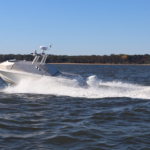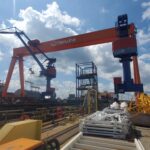Japan is pursuing a mix of imported, indigenous and cooperatively developed technologies to beef up its defenses as China, North Korea and Russia flex their muscles with various new weapon systems, a Japanese defense official said Dec. 19.Japan faces an “increasingly severe” security environment, said Hirokazu Hokazono, deputy commissioner and chief defense scientist for the Japanese Ministry of Defense’s Acquisition, Technology & Logistics Agency (ATLA). China is developing the J-20 next-generation fighter, GJ-1 Yilong attack unmanned aircraft and Dong-Feng 21…
Contract Updates
USTRANSCOM has awarded a firm-fixed price (indefinite-delivery, indefinite-quantity contract) – $10,915,926.84,
USTRANSCOM has awarded a firm-fixed price, indefinite-delivery, indefinite-quantity contract, with a face value of $10,915,926.84, to SSA Atlantic LLC, Jacksonville, Florida, (HTC71126DE119). This contract provides Stevedoring and Related Terminal Services (S&RTS) in Florida, at the Ports of Jacksonville. The base…
The Boeing Co. (Ridley Park, Pennsylvania) – $183,163,191.00
The Boeing Co., Ridley Park, Pennsylvania, was awarded a $183,163,191.00 Firm-Fixed Price delivery order modification (Contract Number W91215-16-G-000 H9224122F0002 P00004) for procurement of H-47ER Rotary Wing Aircraft in support of United Kingdom Foreign Military Sales through U.S. Special Operations Command.…
CORRECTION: The contract announced on Dec. 15 2025 (for Southeastern Kentucky Rehabilitation Industries, Corbin) – $14,312,903
CORRECTION: The contract announced on Dec. 15, 2025, for Southeastern Kentucky Rehabilitation Industries,* Corbin, Kentucky (SPE1C1-24-D-N017) for $14,312,903 was announced with an incorrect award date. The correct award date is Dec. 17, 2025.
RGAS LLC (Houston, Texas) – $16,477,807
RGAS LLC,** Houston, Texas, has been awarded a maximum $16,477,807 firm-fixed-price, indefinite-delivery/indefinite-quantity contract under solicitation SPE4A7-25-R-0788 for various hydrofluorocarbon carbon gases. This was a competitive acquisition with five responses received. This is a one-year base contract with two one-year option…

 By
By 











